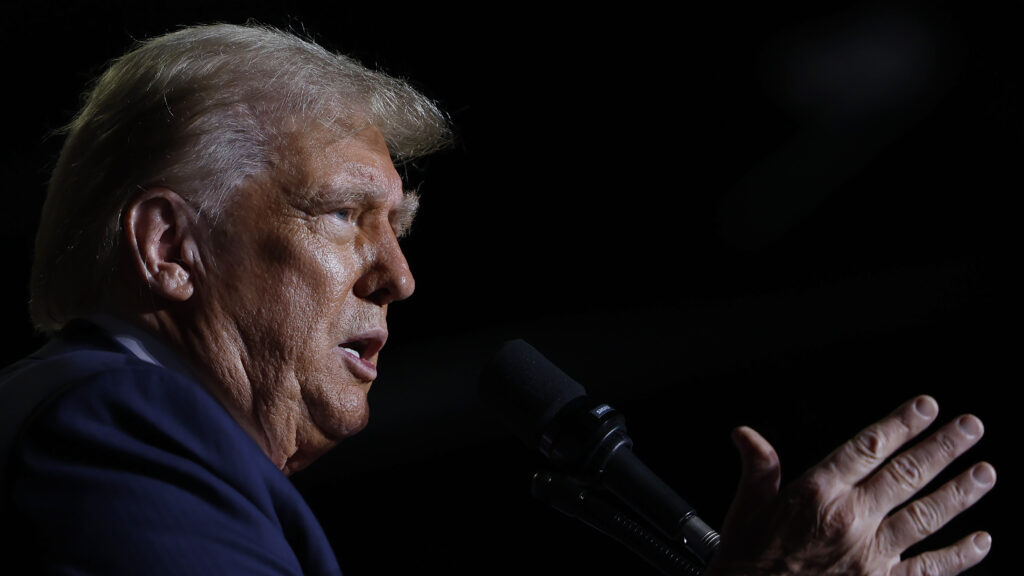Did Trump's FDA Regulations Fuel Biotech Growth?

Table of Contents
Changes in FDA Regulations under the Trump Administration
The Trump administration implemented several key changes to FDA regulations, potentially impacting biotech growth. These alterations focused on streamlining the drug approval process and reducing regulatory burdens.
Accelerated Approval Pathways
The Trump administration emphasized the acceleration of drug and biologic approvals through existing pathways and potentially even the creation of new ones.
- Breakthrough Therapy Designation: This program expedited the development and review of drugs for serious conditions with preliminary clinical evidence demonstrating substantial improvement over available therapies.
- Priority Review: Drugs deemed to address unmet medical needs received priority review, significantly reducing the overall review time.
- Fast Track Designation: This designation facilitated the development and review of drugs to treat serious conditions and fill an unmet medical need.
These changes demonstrably reduced the time to market for many drugs. While precise data comparing approval times before and during the Trump administration requires extensive analysis, anecdotal evidence and reports suggest a faster approval process for many applications. This speed-to-market advantage is a major factor potentially contributing to increased investment and overall growth within the sector.
Right to Try Initiatives
The expansion of "Right to Try" initiatives allowed terminally ill patients access to experimental treatments not yet approved by the FDA.
- Increased Patient Access: Proponents argue this provided hope and potential treatment options for patients with limited alternatives.
- Ethical and Practical Challenges: Critics raised concerns about potential risks to patients, lack of robust data collection, and the potential diversion of resources from traditional clinical trials.
While the direct impact on biotech growth is debatable, "Right to Try" may have influenced clinical trial recruitment by providing a pathway for patients to engage with experimental therapies, thus indirectly contributing to the overall research landscape. However, the exact correlation needs further investigation.
Deregulation Efforts and Their Consequences
The Trump administration also pursued efforts to reduce regulatory burdens on the biotech industry.
- Reduced regulatory paperwork: Some argue this freed up resources for research and development.
- Potential safety risks: Critics voiced concerns about potential compromises in drug safety and efficacy due to reduced oversight.
The impact of these deregulation efforts is complex and requires a careful assessment of the trade-offs between speed, cost efficiency, and safety. While potentially stimulating innovation, reduced oversight could inadvertently lead to unforeseen consequences. This area warrants further, rigorous investigation.
Impact on Biotech Investment and Innovation
The changes in FDA regulations under the Trump administration are believed by many to have had a significant influence on biotech investment and innovation.
Increased Venture Capital Funding
The biotech sector witnessed a surge in venture capital funding during the Trump years.
- Increased funding amounts: Reports indicate a substantial increase in investment compared to previous years.
- Correlation with regulatory changes: While increased funding could be attributed to various factors (market trends, technological advancements), some argue that the regulatory changes contributed positively to investor confidence.
The precise correlation between these regulatory changes and investment requires a comprehensive econometric analysis to control for confounding factors.
Fostering of Biotech Startups
The potentially less stringent regulatory environment may have fostered the creation and growth of biotech startups.
- Reduced barriers to entry: Streamlined approval processes and reduced bureaucratic hurdles could have eased the entry barriers for new companies.
- Examples of successful startups: Identifying startups whose success can be directly linked to these regulatory changes requires further investigation.
More research is necessary to definitively determine the extent to which the regulatory changes directly aided the emergence and success of specific biotech startups.
Impact on Research and Development
Regulatory changes may have indirectly influenced research and development (R&D) activities.
- Increased R&D spending: The potential for faster approvals and market entry might have encouraged increased investment in R&D.
- Focus on specific research areas: Changes in the regulatory landscape may have influenced which areas of biotech research received the most investment.
The effect on overall R&D requires further analysis to identify any shifts in research priorities and investment patterns.
Counterarguments and Criticisms
While the Trump administration's regulatory changes are often lauded for potentially boosting biotech growth, several criticisms need to be addressed.
Concerns about Safety and Efficacy
Critics raised concerns about potential compromises in drug safety and efficacy due to the accelerated approval pathways.
- Examples of safety concerns: Specific instances where safety concerns were raised after accelerated approvals need to be examined and analyzed.
- Balancing speed and safety: The crucial balance between accelerating the approval process and maintaining rigorous safety standards requires careful consideration. Further studies could evaluate the long-term safety data for drugs approved under these accelerated pathways.
This is a critical area requiring ongoing monitoring and evaluation.
Unequal Access to Treatments
Some critics argue that regulatory changes might have exacerbated existing inequalities in access to new therapies.
- Disparities in access: Potential disparities based on factors like socioeconomic status, geographic location, and insurance coverage need to be investigated.
- Data on access: Comprehensive data is required to assess whether these regulatory changes impacted access to treatment equitably across different patient populations.
Conclusion: Summarizing the Impact of Trump's FDA Regulations on Biotech Growth
The impact of Trump's FDA regulations on biotech growth is multifaceted and complex. While accelerated approval pathways and deregulation efforts potentially fostered innovation and increased investment, concerns remain regarding safety, efficacy, and equitable access to treatments. The observed increase in venture capital funding and the potential for faster drug development are noteworthy positive aspects. However, the long-term consequences of reduced regulatory oversight need further scrutiny. A balanced assessment requires careful consideration of both positive and negative implications. Further research is needed to fully understand the long-term implications of Trump's FDA regulations on biotech growth. This analysis provides a starting point for a more comprehensive investigation into the complex interplay between regulation and innovation in the life sciences. Continued study and discussion are vital to optimizing the regulatory environment and ensuring responsible biotech growth while protecting patient safety and ensuring equitable access.

Featured Posts
-
 Yankees Smash Team Record With 9 Home Runs Judges 3 Hrs Lead The Charge
Apr 23, 2025
Yankees Smash Team Record With 9 Home Runs Judges 3 Hrs Lead The Charge
Apr 23, 2025 -
 Amandine Gerard Je T Aime Moi Non Plus Entre L Europe Et Les Marches
Apr 23, 2025
Amandine Gerard Je T Aime Moi Non Plus Entre L Europe Et Les Marches
Apr 23, 2025 -
 Cub Southpaw Shota Imanagas Mlb Best Splitter A Deep Dive
Apr 23, 2025
Cub Southpaw Shota Imanagas Mlb Best Splitter A Deep Dive
Apr 23, 2025 -
 Ankhfad Ser Aldhhb Terf Ela Asearh Balsaght Alywm
Apr 23, 2025
Ankhfad Ser Aldhhb Terf Ela Asearh Balsaght Alywm
Apr 23, 2025 -
 Attracting Canadian Private Investment Caat Pension Plans Active Approach
Apr 23, 2025
Attracting Canadian Private Investment Caat Pension Plans Active Approach
Apr 23, 2025
